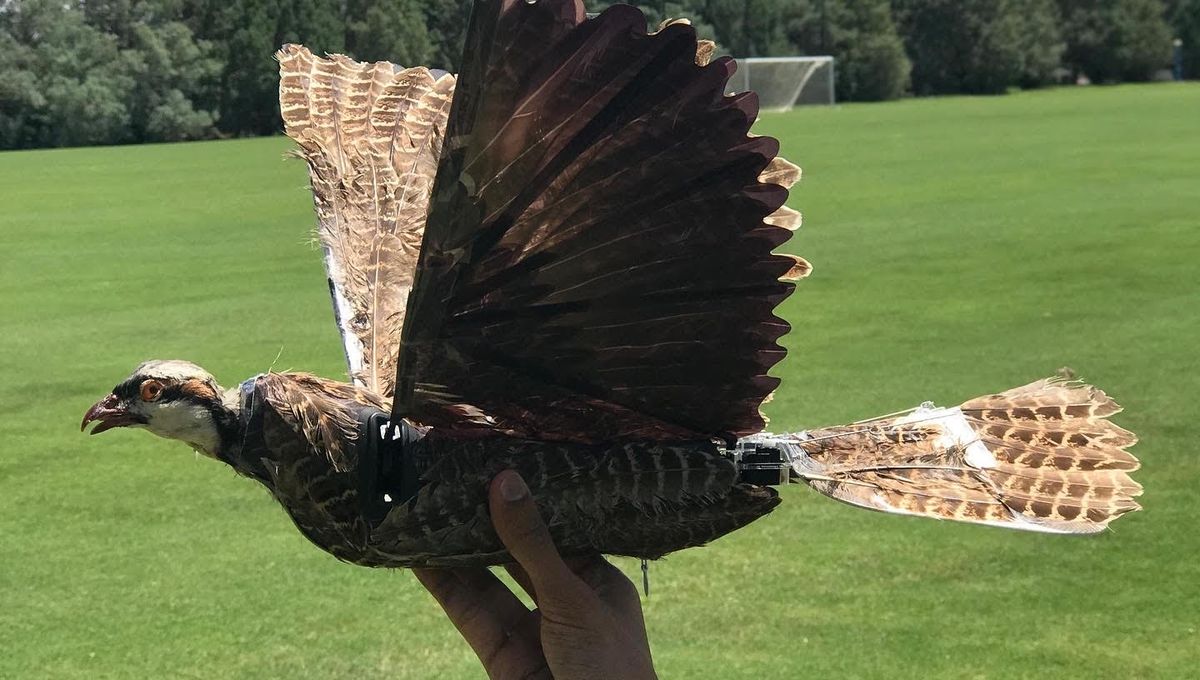
This article first appeared in Issue 9 of our free digital magazine CURIOUS.
The BBC’s Spy In The Wild demonstrated the unique insights into animal behavior that can be observed when we hoodwink wildlife into thinking that a hidden camera is just one of their own. More recently, Spy In The Ocean applied this concept to sea-dwellers, which were observed using “Spy Creatures”. It doesn’t always go right, of course (RIP fake langur baby), but even accidents sometimes work out, such as an egg-cam stolen by a bird that managed to capture a killer shot of a penguin colony before it was discarded.
It’s one thing to stuff a camera in an egg and see what happens – but what about when the answers you seek are airborne? This is something that scientists at New Mexico Tech have been trying to tackle as they ponder the flying dynamics of migrating birds.
These animals move in a V-formation, swapping positions within the V so that each bird can take turns to carry the worst of the energetic burden. However, the exact choreography and decision-making that goes into this marathon performance has evaded our scientific understanding as humans in microlites can’t get close enough to observe it without upsetting the animals.
Creating a naturalistic spy to enter the fold is easier said than done, but as Dr Mostafa Hassanalian and his team at New Mexico Tech have discovered, bringing wild animals into the picture can help in more ways than one. In their efforts to create energy-efficient, naturalistic drones, they have created concepts that use material taken from dead birds to blend in and fly better.
What are the benefits of taxidermy drones?
MH: Currently, the drones that are being used for wildlife monitoring are mainly hexacopter and quadcopter, which means they have propellers that create a lot of noise. They are a potential hazard as well because there is a chance birds might go towards the drone and get hurt. This is why we came up with the idea to develop nature-friendly drones. What would be really helpful about a taxidermy bird drone is if it could fly with a flock and have those birds accept it as a part of the flock. Then, it would be able to monitor their flight and natural behavior.
Another application is one of the challenges that airports near the oceans face regarding bird strikes. These types of taxidermy birds can actually be applied to fly in and guide other birds out of the airport.
How could the flapping models eventually take off?
MH: For takeoff and landing we have been looking at simulating their legs, or in future we may even be able to use their actual legs to attach to mechanisms that can allow them to take off or land in trees. We are trying to create models that are as close to the actual birds, so that’s why we have a combination of flapping drones.
How do you get the materials?
MH: We haven’t killed any birds for this research. We only purchase wings that are available online for pigeons, and we also work with a local taxidermy team in Albuquerque for pheasants. We haven’t worked with other birds because it’s against US policy, which is important to follow. We are developing these concepts to help nature, not to try and hurt it.
Subscribe to our newsletter and get every issue of CURIOUS delivered to your inbox free each month.
All the research we are doing is inspired by nature. We love it, we learn from it, and we are trying to apply this knowledge to help humanity and our society. That’s something I really like about bioinspiration biomimetics.
Do the drones have uses outside of wildlife?
MH: This kind of nature-friendly drone could also be integrated into a “smart city” for use in delivery, inspection, or monitoring. For these urban applications, we are developing a concept for a drone garden that’s inspired by trees. It can house multiple configurations of the drones, including flapping wings. We have to be careful with how we present any technology that comes into society, people have to like it.
What else are you working on?
MH: Right now, we are developing ideas for a drone for Titan exploration. NASA, with the John Hopkins Applied Physics Laboratory, is going to send drones to [Saturn’s moon] Titan, and it takes nine to 10 years to get there. So now, we are trying to mimic birds to gain insights that could be applied to these drones so they can fly for a longer time. There are multiple ways that we can learn from birds how to manage energy, and that’s a core part of my research group.
Any other cool robots in the mix?
MH: We’re also looking at nature to develop autonomous systems for planetary exploration. For example, dandelion seeds can fly up to 100 miles [160 kilometers] in the wind. Then there are pill bugs that can walk and roll. So, NASA has been trying to study Martian lava tubes, but they have not been able to send any robots there. Our overall goal is that a pill bug robot could disperse thousands of these tiny [dandelion-seed-inspired] sensors into the atmosphere so they can collect information as they fly.
CURIOUS magazine is a digital magazine from IFLScience featuring interviews, experts, deep dives, fun facts, news, book excerpts, and much more. Issue 12 is out now.
Source Link: Are Taxidermy Drones Made Of Dead Birds The Ultimate Spies?